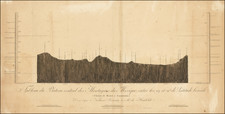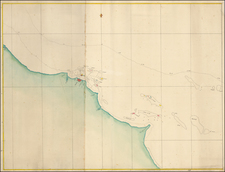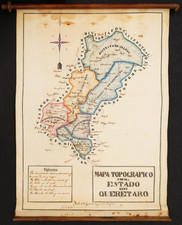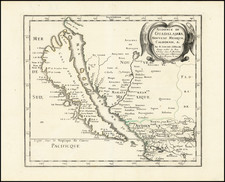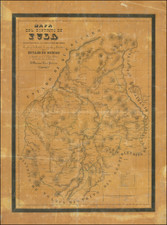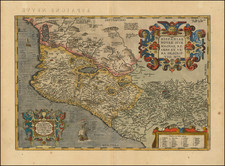Fine example of Antonio García Cubas's map of the state of San Luis Potosi, published by Cadena y Ca and lithographed by Montauriol Sucesores.
The map was issued as part of the Atlas Geografico de los Estados Unidos Mexicanos, a comprehensive atlas comprising 30 maps detailing Mexican states, the Federal District, and territories including the Yucatan peninsula. This particular edition is noted for its new silver border printed on the map sheets, adding to its aesthetic quality.
Antonio García Cubas, the renowned 19th-century Mexican cartographer, played a significant role in depicting Mexico's geographical and cultural dimensions during a pivotal era of national development and identity establishment.
The map showcases various types of settlements such as state capitals, head towns of districts, villages, and municipalities, along with haciendas and Ranchos represented through a detailed legend of symbols. It provides exhaustive details of the topographical features, road networks, and other features.
Several railroads are shown, including those in use and under construction.
Antonio García y Cubas (1832-1912) was a Mexican geographer, historian, writer, and cartographer. An orphan from a young age, Cubas attended the Colegio de San Gregorio and the Colegio de Ingenieros, where he earned a geography degree. In 1856, he became a member of the Sociedad Mexicana de Geografía y Estadística.
Cubas wrote several geographic works, including introductory courses to geography, historical atlases, and maps. He is best known for his Atlas Geográfico, Estadístico e Histórico de la República Mexicana (1857), Carta General de México (1863), and Diccionario Geográfico, Histórico y Biográfico de los Estados Unidos Mexicanos en cinco volúmenes, editados entre 1888 y 1891. He is also praised for his memoir, El Libro de mis Recuerdos (1905). Today, the best books published in anthropology and history in Mexico are given the Antonio García Cubas prize.









